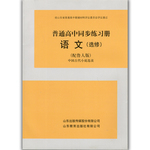10."When studying foreign speech,don't forget about body language,"Anne Merritt said.
Something as simple as a smile can show friendliness in one culture,embarrassment in another,impatience in a third.Even silence means different things in different places.If you want to avoid making some mistakes when traveling abroad,you should pay attention to the following.
Touch
Britain,along with much of Northern Europe and the Far East,has a"non-contact"culture.In those countries,there is very little physical contact in people's daily talks.Even brushing someone's arm by accident is the reason for an apology.However,in the high-contact cultures of the Middle East,Latin America,and southern Europe,physical touch is a big part of daily life.
What's more,there are different standards for who touches whom and where.In much of the Arab world,men hold hands and kiss each other in greeting,but would never do the same with a woman.In Thailand and Laos,it is taboo(禁忌)to touch anyone's head,even children's.In South Korea,elders can touch younger people with force when trying to get through a crowd,but younger people can't do the same.
Eye contact
In most Western countries,frequent eye contact is a sign of confidence and attentiveness(注意).We may think that a conversation partner who looks away is either not listening to us or lying.Of course,this is not the standard around the world.
In many Asian,African,and Latin American countries,the unbroken(未间断的)eye contact would be considered impolite and rude.These cultures consider avoiding eye contact a sign of respect for bosses and elders.In these parts of the world,children won't look at an adult who is speaking to them,and nor will employees look at their bosses.
32.In Britain,when people are talking,they usuallyC.
A.avoid eye contact
B.brush the others'arms
C.avoid physical contact
D.apologize for their mistakes
33.In southern Europe,physical touch isD.
A.unnecessary
B.impolite
C.dangerous
D.common
34.What should we avoid doing in Thailand?A
A.Touching a kid's head.
B.Touching someone's arm.
C.Shaking hands with children.
D.Touching old people with force.
35.What does this text mainly tell us?D
A.How to have a good time abroad.
B.The importance of body language.
C.How to communicate with foreigners.
D.An introduction to some body language.
分析 本文属于说明文阅读,作者通过这篇文章主要向我们描述了日常交流过程中,应该注意的一些肢体语言.
解答 32.C.推理判断题.根据Touch部分的"Britain,along with much of Northern Europe and the Far East,has a‘non-contact'culture.In those countries,there is very little physical contact(接触) in people's daily talks."可推知,在英国,人们交谈时通常避免身体接触.故选C.
33.D.细节理解题.根据Touch部分的"However,in the high-contact cultures of the Middle East…southern Europe,physical touch is a big part of daily life."可知,在欧洲南部,身体接触是日常生活中的一个重要部分.故选D.
34.A.细节理解题.根据Touch部分的"In Thailand and Laos,it is taboo(禁忌) to touch anyone's head,even children's."可知,在泰国,我们要避免触摸任何人的头,甚至是孩子也不行.故选C.
35.D.主旨大意题.通读全文,根据第一段When studying foreign speech,don't forget about body language,"Anne Merritt said可知,本文主要介绍了日常交流过程中,应该注意的一些肢体语言.故选D.
点评 考察学生的细节理解和推理判断能力,做细节理解题时一定要找到文章中的原句,和题干进行比较,再做出正确的选择.在做推理判断题不要以个人的主观想象代替文章的事实,要根据文章事实进行合乎逻辑的推理判断.



 海淀黄冈名师导航系列答案
海淀黄冈名师导航系列答案 普通高中同步练习册系列答案
普通高中同步练习册系列答案 优翼小帮手同步口算系列答案
优翼小帮手同步口算系列答案